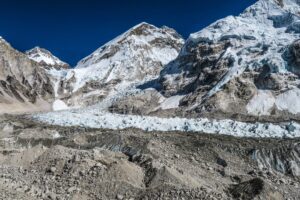Mount Everest a name that has captivated the world since its recognition as Earth’s tallest peak. Its awe-inspiring beauty and towering height are famous. However, a lesser-known aspect of Everest, often referred to as the “Rainbow Valley,” reveals the mountain’s darker side. This article aims to shed light on this mysterious location, providing essential information for those considering an ascent.
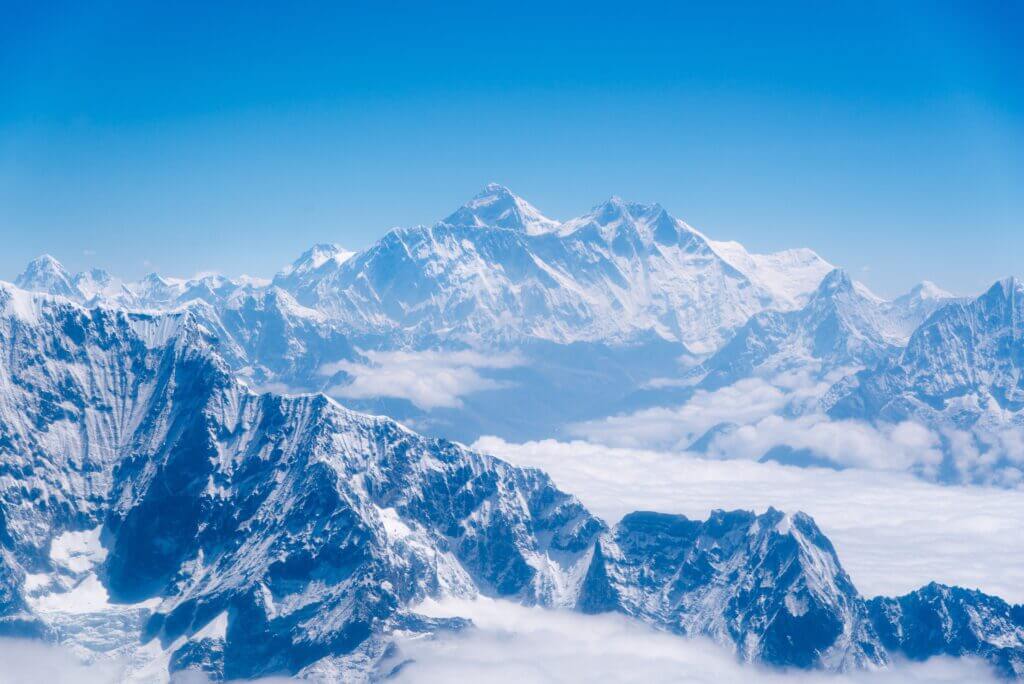
Though the name “Rainbow Valley” might evoke images of a picturesque landscape, the reality is far different. This region is a haunting graveyard of fallen climbers. It is situated below the northern ridge of Mount Everest at an altitude exceeding 8,000 meters. Countless bodies lie scattered throughout the area, a stark reminder of the mountain’s perils.
Clad in vibrant blue, red, orange, and green jackets, these corpses provide the area with its colourful moniker. Alongside the bodies, multicoloured debris, including tents, cans, and oxygen tanks, contribute to the rainbow-like appearance.
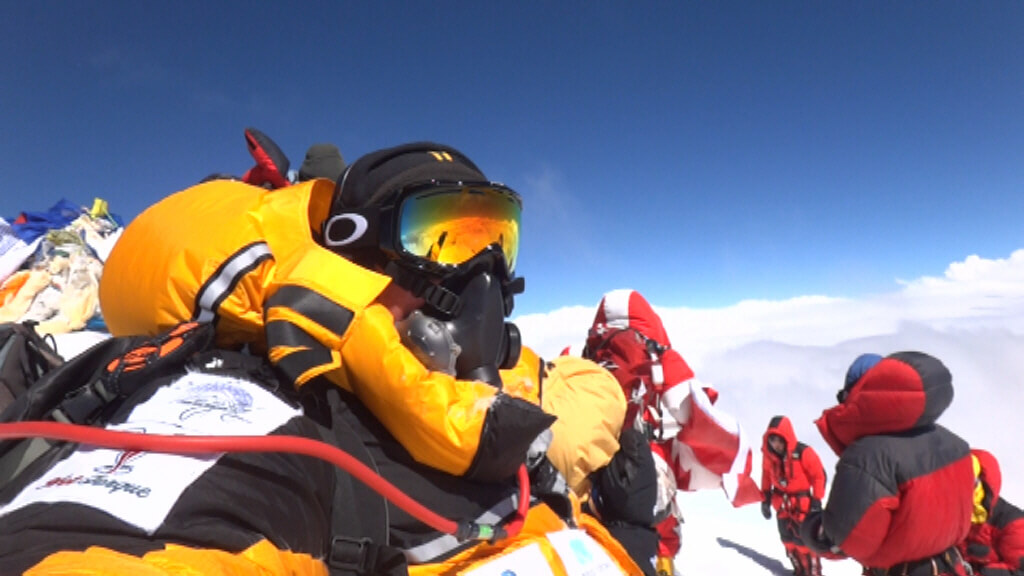
Each year, climbers attempt to conquer the summit. Some succeed, others turn back, and tragically, a few lose their lives. Most of these fatalities occur in Everest’s “death zone” – an area above 8,000 meters. The hostile environment, characterized by thin air, severe weather, and fierce winds, makes survival a constant struggle. The narrow trails in the death zone leave little room for the fallen. The bodies are often pushed aside, finding their final resting place in the Rainbow Valley.
Recovering the deceased from such treacherous terrain is a high-risk endeavour, requiring multiple people and immense effort. As a result, the bodies remain undisturbed, and Rainbow Valley grows increasingly crowded with each passing year.
Gaining a clear understanding of Rainbow Valley on Mt. Everest requires first familiarizing oneself with the concept of the “death zone”
Understanding Altitude Sickness
When going up in altitude, climbers risk experiencing altitude sickness, also known as acute mountain sickness. This condition arises due to insufficient oxygen supply to the brain at high elevations.
As climbers ascend, the barometric pressure of the air decreases, causing oxygen molecules to disperse and resulting in thinner air. This diminished oxygen availability adversely affects the body’s organs. It leads to symptoms such as laboured breathing, difficulty walking, coughing up fluid, disorientation, and even unconsciousness.
In these conditions, blood viscosity increases, dehydration sets in, and the likelihood of a stroke rise. Additionally, altitude sickness can severely impair judgment. Thus, each laborious step taken at high elevations becomes a race against time and the body’s limitations.
What do Climbers call the “Death Zone”?
The death zone on Mt. Everest refers to any mountain area above 8,000 meters (26,247 feet). Over 200 fatalities have occurred within this treacherous zone, earning it the ominous title of the “death zone.”
At such extreme elevations, the oxygen level is dangerously low, with only one-third of the typical concentration at sea level. To mitigate this risk, climbers carry supplementary oxygen tanks during their ascent. Insufficient oxygen supply at these heights can lead to altitude sickness and, in some cases, death.
The trails in the death zone are notoriously narrow and congested, offering little room for the steady stream of climbers. In peak season, queues of climbers can be seen waiting to complete their ascent, as showcased in viral photos. This congestion can force climbers to spend extended periods in the death zone. As a result, it further increases the inherent risks associated with high-altitude mountaineering.
Rainbow Valley is a reminder of the danger
What you can expect of the Rainbow Valley
Rainbow Valley, situated on Mt. Everest, derives its poignant name from the colourful jackets adorning the bodies of climbers who lost their lives on the mountain. The hues of the rainbow – red, green, and blue – are represented by these vibrant down suits, partially concealed by snow.
Many of these fatalities occurred within the notorious Death Zone. If climbers perished along the mountain trail, others were often compelled to move their bodies off the path to clear the way.
The reality of Everest is stark, leaving climbers with little choice but to prioritize their own survival. With the trail being perilously narrow, icy, and treacherous, every moment is a matter of life or death.
When encountering deceased climbers, those still ascending must focus on staying alive. In the Death Zone, where altitude sickness can become debilitating, climbers must also resist the urge to sleep, as succumbing to the cold could prove fatal.
The Deadly Reality of Everest’s Death Zone and the Formation of Mt Everest’s Rainbow Valley
The Death Zone on Mt. Everest, encompassing areas above 8,000 meters (26,247 feet), is notorious for its high number of fatalities. The extremely low oxygen levels in this zone can result in a life-threatening lack of oxygen for climbers, leading to death.
The trail to the summit within the Death Zone is so narrow that it can accommodate only one person at a time. As a result, the bodies of those who perish in this area are pushed into Rainbow Valley, effectively turning it into their final resting place.
Deceased climbers’ bodies are either stepped over or moved off the trail into Rainbow Valley or other locations below the ridge. Chad Gaston, a recent Everest climber, described the challenges of navigating past incapacitated individuals, including one person wrapped like a mummy.
Over 300 climbers have lost their lives in the Death Zone since 1922. In 2015 alone, an avalanche claimed the lives of at least 19 climbers. As the number of casualties continues to rise, Rainbow Valley grows increasingly more colourful with the remains of the fallen.
Why is there an accumulation of deceased climbers in Mt Everest’s Rainbow Valley?
What becomes of the bodies in Rainbow Valley or the Death Zone on Mt. Everest? In most cases, they remain undisturbed indefinitely, as recovery is exceedingly difficult, if not impossible.
Helicopter rescues at such high elevations are not feasible due to the powerful winds, while the extreme weather conditions, narrow trails, and high altitude pose significant challenges for those attempting to recover bodies. It often takes several people to retrieve a single body, a task few are willing to undertake.
The cost of recovering a body can exceed 70,000 USD. Although some bodies have been recovered after paying this hefty sum, the process remains dangerous and can result in additional fatalities.
For instance, in 1984, two Nepalese mountaineers lost their lives while attempting to recover a body from the Death Zone. Even with substantial financial resources, there is no guarantee that a body can be successfully retrieved. Consequently, the Rainbow Valley continues to accumulate the remains of climbers who have perished on Mt. Everest.
What is the main cause of death on the Mount Everest
The majority of fatalities on Mt. Everest occur within the Death Zone, an area above 8,000 meters. This elevation presents numerous challenges, including thin oxygen levels, harsh weather conditions, strong winds, and narrow trails. Even a minor misstep can prove fatal, making each step a matter of life and death.
As of 2022, Everest has been summited by 6,098 different people, for a total of (Approx.) 11,346 summits. till 2022 with c.310 recorded fatalities since 1924. The death rate dropped below 1% in 1980.
A BBC report revealed that the majority of deaths on the mountain were due to avalanches (approximately 30%), while 20% resulted from acute mountain sickness. Falls and exhaustion are other significant factors contributing to fatalities during Everest climbs.
The highest death rate occurred during the 1970-1980s, at 2.2%, but has since decreased.
Some Facts About the Rainbow Valley on Mt Everest
- Since Tenzing Norgay and Edmund Hillary completed the first verified ascent of Mt. Everest in 1953, the mountain has claimed the lives of over 300 climbers. The vast majority of these fatalities occurred in the Death Zone.
- Due to the decrease in air pressure at such high elevations, an average person can only breathe in about 30% of the oxygen they typically receive at sea level.
- Without proper acclimatization, an individual accustomed to sea-level conditions would lose consciousness within two to three minutes in the Everest Death Zone.
- Given the extreme conditions in the Death Zone, climbers estimate that it can take up to 12 hours to traverse the 1.72km distance between South Col and Everest’s summit.
- The study “Mortality on Mount Everest” indicates that profound fatigue and delayed summit times are early factors associated with subsequent fatalities.
- Retinal haemorrhages can affect one in four Everest climbers. Although these typically improve upon descending to lower altitudes, they can still be lethal in the Death Zone.
- An ABC Catalyst article states that one in 20 climbers who reached Everest’s summit dies while descending to base camp.
- Most bodies frozen on the mountain are found in the Everest Death Zone.
- Despite these daunting challenges, climbers have successfully navigated the danger zone and returned from Everest over the years.
Everest Base Camp Stories
Everest Base Camp is the launching point for climbers attempting to summit Mt. Everest. The area is filled with tent settlements of mountaineers, and during peak season, the base camp becomes vibrant with multicoloured tents.
This location acts as the final resting station before climbers begin their ascent. While at the base camp, mountaineers often share songs, experiences, and stories with one another. Many of the tales whispered among climbers at Everest Base Camp revolve around the corpses found in Rainbow Valley.
Among the most famous of these stories are those of Green Boots, Sleeping Beauty, and Hannelore Schmatz.
Green Boots Everest
Green Boots is a well-known story from Everest expeditions, having received significant media attention. The “surname” refers to a deceased climber on the mountain’s northeast ridge.

The body is called Green Boots due to the green boots it wears and the oxygen tanks on its back. It is widely believed that the body belongs to Tsewang Paljor, an Indian climber who went missing during a 1996 ascent.
Two other climbers also perished in the same incident, but their bodies were not found. Green Boots, however, remains in a small cave below the summit.
This body serves as a landmark for Everest climbers. Approximately 80% of them rest in this cave during their ascent. Green Boots is the most visible and well-known corpse in Rainbow Valley.
Sleeping Beauty Everest
Another well-known story is that of Francys Arsentiev, the first American woman to summit Mt. Everest without supplemental oxygen.
The incident occurred on May 22, 1998. Francys and her husband set out on the expedition like any other mountain climb. Her ascent went smoothly, but during the descent, she became disoriented and was stranded on the mountain for three days without supplemental oxygen. A rescue team was eventually dispatched to bring her down.
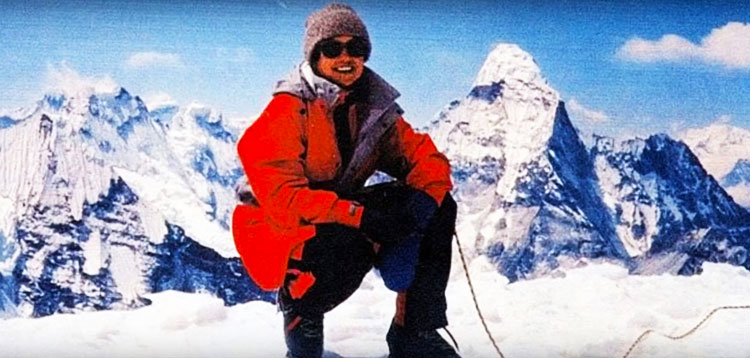
When the team discovered Francys, she was barely breathing, severely frostbitten, and close to death. They managed to lower her as far as they could, but it became increasingly difficult to continue the descent.
Ultimately, they had no choice but to leave her to die on the slopes of Mt. Everest. Francys was found lying on her back as if asleep, which led to her being nicknamed “Sleeping Beauty.”
Hannelore Schmatz- First women to die on Everest
Hannelore Schmatz, a German mountaineer, holds the unfortunate distinction of being the first woman to perish on the slopes of Mount Everest. In 1979, she and her husband set out to conquer the world’s highest peak. The group successfully reached the summit, but during the descent, Hannelore and American climber Ray Genet fell behind.
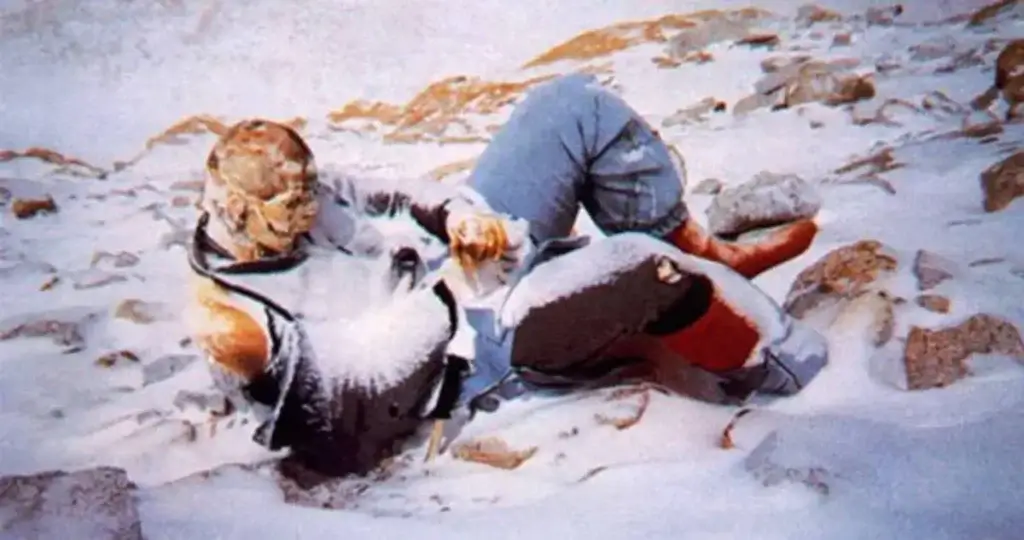
Exhausted and unable to continue, they decided to spend the night with one of the Sherpas in Everest’s notorious death zone. A fierce snowstorm struck, and Ray Genet succumbed to hypothermia before daybreak. Hannelore and the Sherpa managed to survive the night, but at an altitude of 8,290 meters, Hannelore collapsed, propped up by her backpack, never to rise again. Her final words were a plea for water.
For years, Hannelore’s corpse remained in the same spot, her open eyes and flowing hair a haunting reminder of the mountain’s perils. Numerous climbers passed her body during their ascents and descents. Tragically, two climbers lost their lives in an attempt to recover her body five years later; their remains were found entangled in ropes on the mountain. A year later, powerful winds swept Hannelore’s body off the ridge. Her story serves as a chilling reminder of the dangers on Mount Everest.
George Mallory
The discovery of George Mallory’s body in 1999, 75 years after his death in 1924, marked a significant moment in Everest’s history. George Mallory, alongside his climbing partner Andrew Irvine, attempted to be the first to summit Mount Everest but disappeared during the expedition. Whether they successfully reached the summit before their demise remains unanswered.
In 1999, during an unusually warm spring, Conrad Anker, a renowned mountaineer, found Mallory’s body while filming a documentary with his team. The identification came from a tag with Mallory’s name sewn into it. Due to the extreme cold, his upper torso, his left arm, and part of his legs were remarkably well-preserved.
The broken leg bone on his body suggests that Mallory had likely fallen or slipped, leaving him incapacitated. Over time, high winds and harsh weather stripped parts of his body of clothing and skin. However, the extreme cold had largely preserved the body in its frozen state.
Mt Everest Expedition
Indeed, while Mount Everest presents numerous challenges and risks, it remains the ultimate goal for many climbers around the world. The sense of accomplishment that comes from standing at the highest point on Earth is an unparalleled experience, and for many, it’s worth facing the dangers.
With thousands of climbers having successfully summited Mount Everest and a death ratio of under 1%, the peak continues to attract adventurers from across the globe. There are two primary routes to the summit: one from Nepal (the southern route) and one from Tibet (the northern route). The southern route, taken by Tenzing Norgay and Sir Edmund Hillary during their historic 1953 ascent, is the most popular and relatively faster option.
Embarking on an Everest expedition requires prior high-altitude climbing experience, determination, physical stamina, and mental fortitude. The harsh climate and high elevation pose unique challenges that climbers must overcome to achieve their dream of reaching the summit.
So, for those who dare to step out of their comfort zone and tackle the Everest challenge, remember that careful preparation, training, and a strong resolve are essential. Despite the inherent risks, the opportunity to conquer the world’s tallest peak and gaze down upon the Earth from 8,848 meters (29,029 feet) is a once-in-a-lifetime experience that many adventurers dream of accomplishing.

